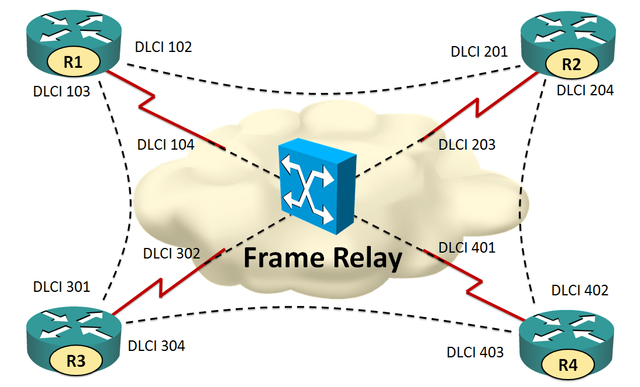frame relay
Frame Relay is a high-performance wide area network (WAN) protocol that operates at the data link layer (Layer 2) of the OSI model. It was widely used in the 1990s and early 2000s for connecting local area networks (LANs) and for transmitting data over long distances in a more efficient manner compared to older technologies like X.25.
Key Features of Frame Relay:
Packet-Switched Technology: Frame Relay is a packet-switched technology that uses a method called "statistical multiplexing" to send multiple data frames across a network. These frames can be sent from multiple sources and can share the same network bandwidth.
Virtual Circuits: It uses virtual circuits to establish a connection between two endpoints. These can be either Permanent Virtual Circuits (PVCs) or Switched Virtual Circuits (SVCs). PVCs are typically pre-established, while SVCs are set up dynamically as needed.
No Error Correction: Unlike X.25, Frame Relay does not provide error correction. It assumes that modern networks are reliable enough that error correction is unnecessary. This lack of error correction increases speed but relies on higher layers of the OSI model to handle any necessary error checking.
Efficiency: Frame Relay is more efficient than older protocols because it has less overhead, meaning it uses less of the available bandwidth for protocol control information and more for actual data transmission.
Data Rate: Frame Relay typically supports data transfer rates ranging from 56 Kbps to 45 Mbps.
Use Cases:
Connecting LANs: Frame Relay was commonly used to connect LANs in different geographical locations, allowing for communication between branches of an organization.
Accessing the Internet: It was also used as a means to provide access to the internet in the early days of widespread internet use.
Connecting Private Networks: Organizations used Frame Relay for connecting private networks due to its cost-effectiveness and efficiency.
Decline:
With the advent of more advanced technologies like MPLS (Multiprotocol Label Switching) and the increasing adoption of IP-based networks, the use of Frame Relay has declined significantly. These newer technologies offer better performance, scalability, and support for a wider range of services.

"Love this in-depth look at Frame Relay! 📊💻 It's fascinating to learn about the key features and use cases of a protocol that was once so widely used. 😮 I'm curious, what are your thoughts on the shift towards MPLS and IP-based networks? Have you worked with Frame Relay in the past or have any experiences to share? Let's discuss! 💬"
I also gave you a 0.43% upvote for the delegations you have made to us. Increase your delegations to get more valuable upvotes. Cheers! 🎉
Help Us Secure the Blockchain for You
Your vote matters! Support strong governance and secure operations by voting for our witnesses:
Get Involved